Using the Nikon Slide Copying Adapter with a Nikon DX Z Camera, Part 1
20 August, 2023
TL;DR 18-70mm Zoom Lens @70mm with a reduced F to Z adapter covers the full frame of the slide using a DX Z Camera on a Nikon PB-6. Machining required.
With any full frame (analog or digital) Camera and a lens in the normal focal length range it is very easy to use the Nikon Copying Adapter with the PB-6 Bellows.
The 50mm, 55mm and 58mm result in the correct working distances that fit within the PB-6 Bellows. The working distance for the 85mm is already too large for the Slide Copying Adapter. See the 36x24 subject field (thats the size of the slide) and the working distances in mm, printed below the grey range bar in the repro ratios overview:
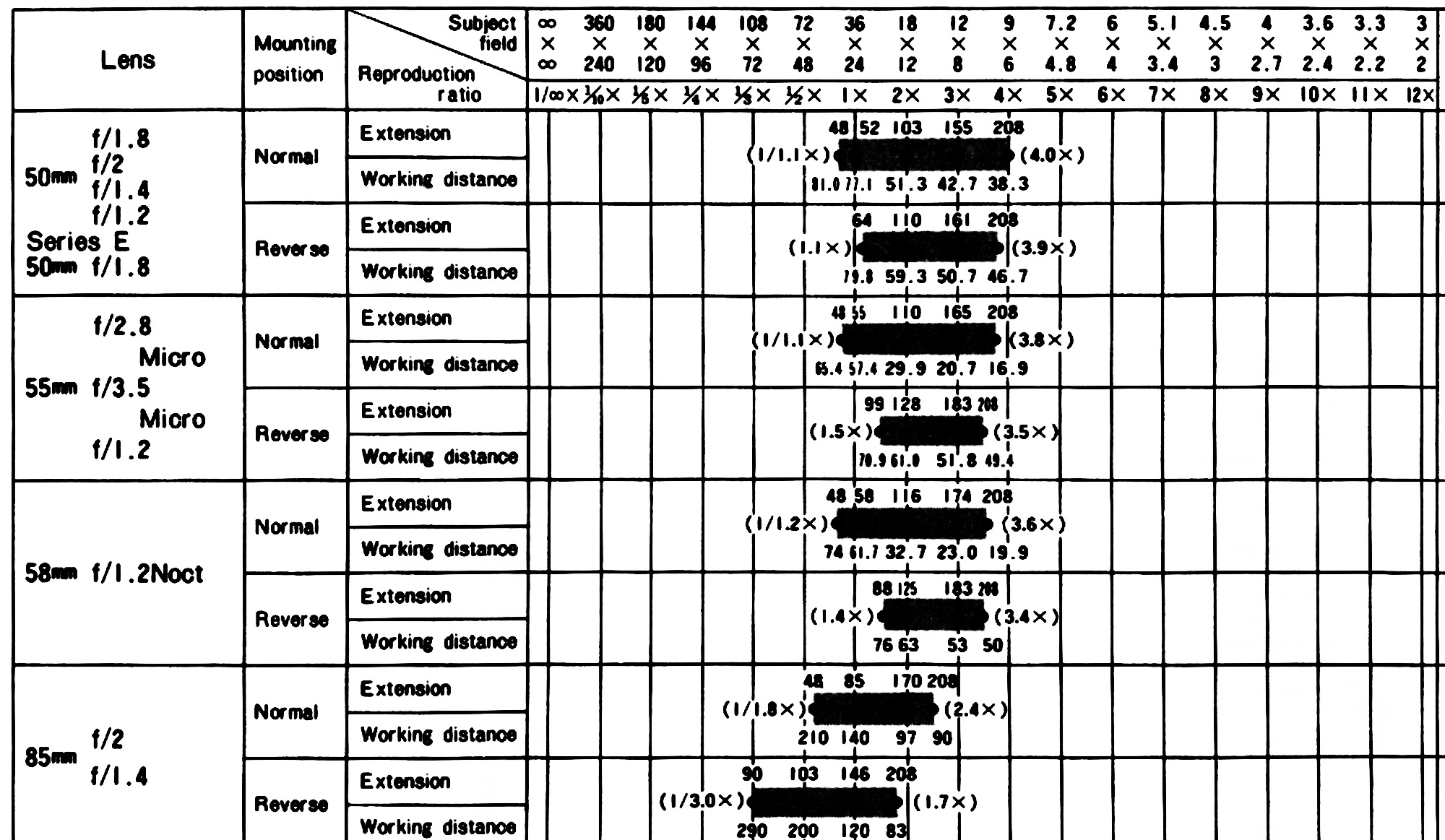

But with a DX camera the field of view is smaller and the slide is cropped. The lenses are already at the left end side for the 36x24 subject field. And moving towards a larger subject field 54x36 to account for the 1.5x cropping is not possible.
The Slide Copying Adapter cannot be positioned closer to the camera using a lens with a shorter focal length because the lens itself is in the way, and using a lens with a larger focal length would position the Slide Copying Adapter too far away outside of the working distance for the bellows. For example, the 85mm lens supports the required subject field, but sets the Slide Copying Adapter about 50mm outside of the bellows rail.
The Nikon 105mm f/2.8 Macro AF D lens in reverse with the BR-2 adapter, as someone in the DPReview forum posted, also moves the Slide Copying Adapter outside of the PB-6 bellows rail.
The PB-4 Slide Copying Adapter used there, works as an extension, and is not part of the bellows rail as with the PB-6.
Even with a modified adapter as described in this post, the Slide Copying Adapter will still be outside of the PB-6 rail.

To use the PB-6 without any extension, the only possible solution without modifiying the bellows is to shorten the distance from the mount to the camera. This changes the ratio and the working distance. Since a Z mount camera is used, the adapter can be reduced to allow the full frame coverage.
As alternative solution, the camera can be mounted via the tripod mount and use a macro lens directly without using the bellows lens mounting.
Or the bellows adapter is modified to allow mounting the camera/lens directly.
In this article, I will describe the solution with a modified adapter to reduce the distance from camera to the lens. See Part 2 with an even more reduced adapter to fit standard 50mm macro lenses.
To get started, the F mount is removed for the machining:

And also the three spring blades:
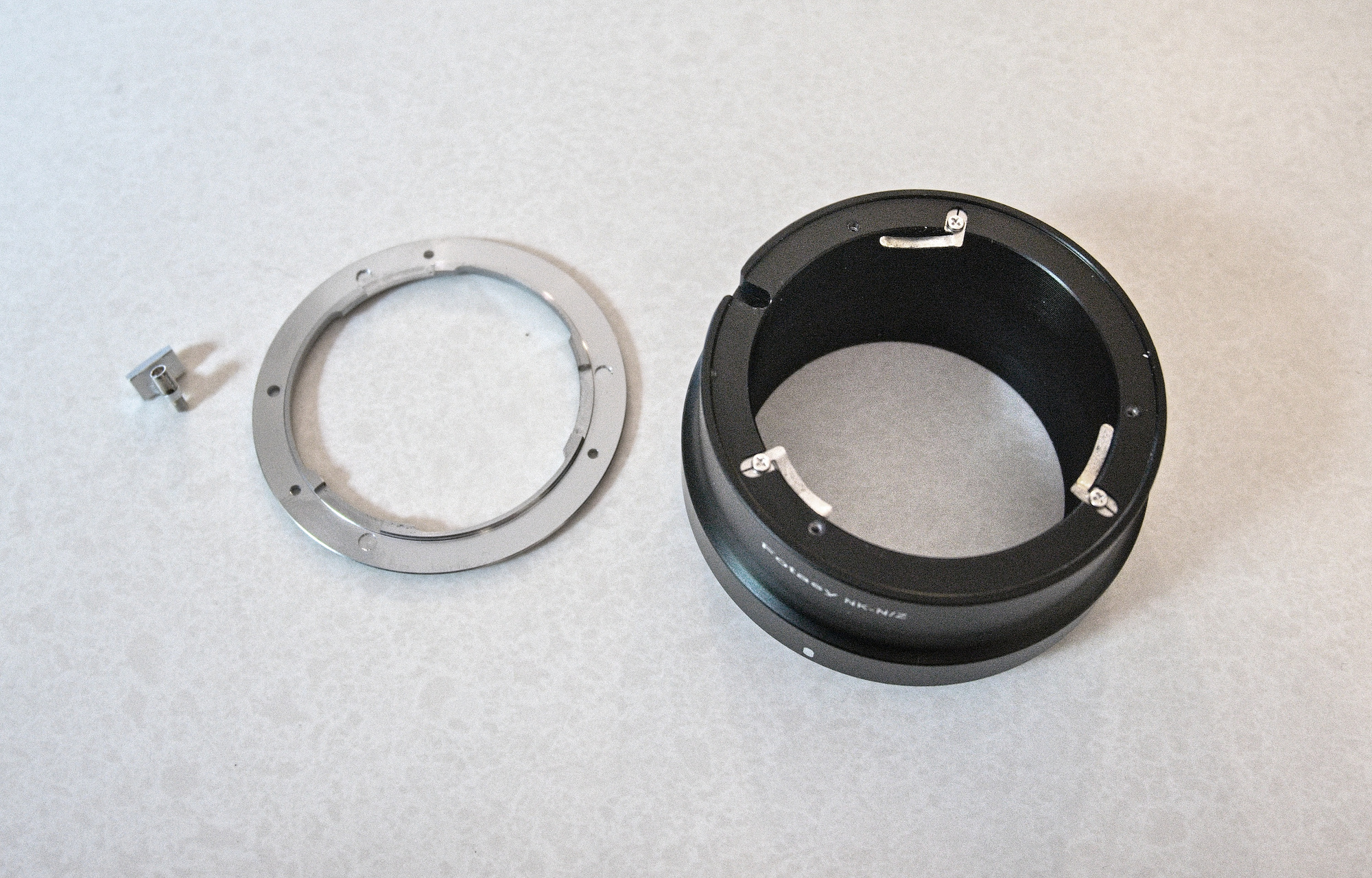
Split the adapter in half.
This is soft aluminium, the rake angle of the tool bit is 30-35° instead of the 8° for steel and the 0° for brass in case you were wondering:
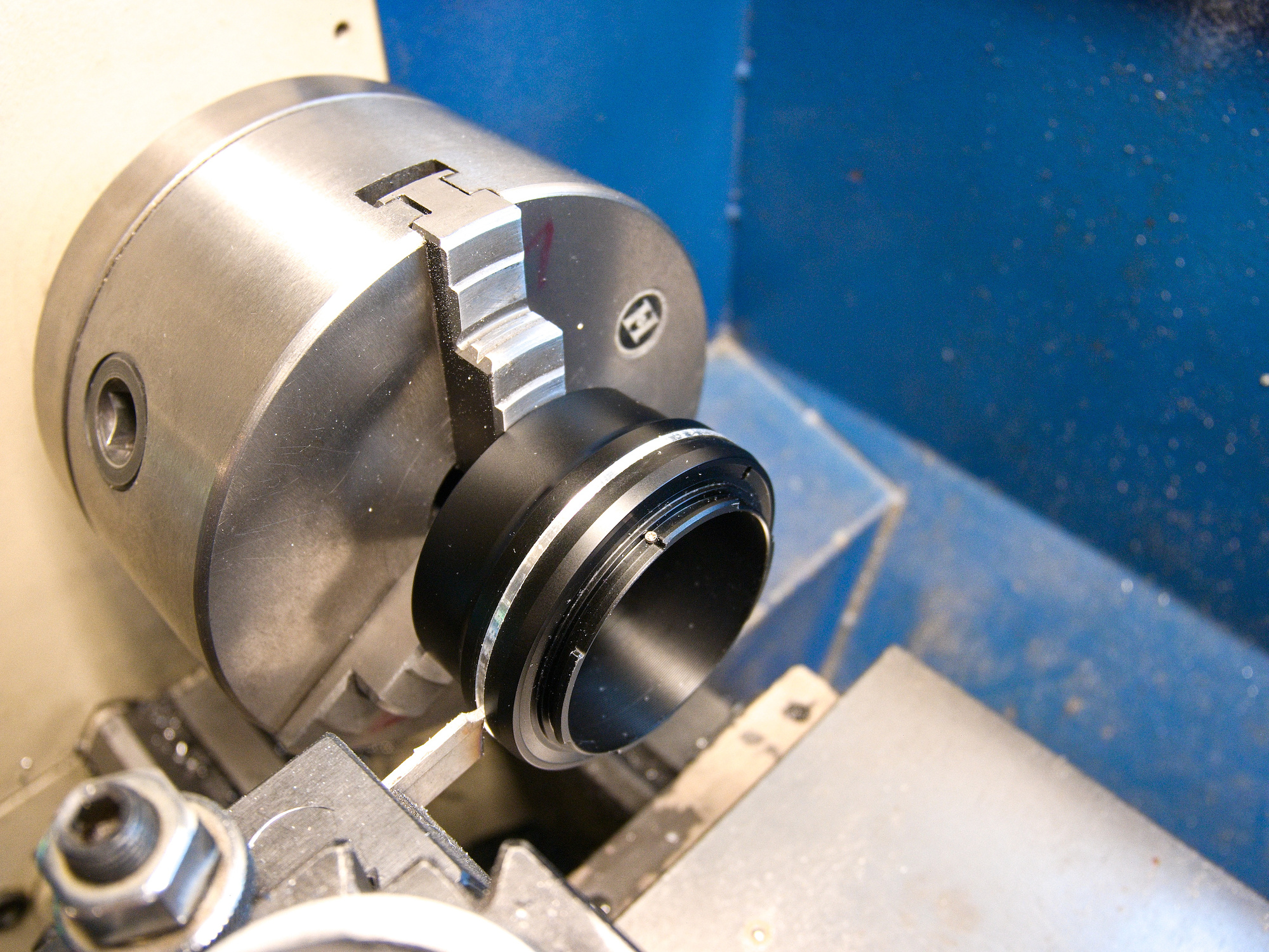
Reduce the length of the F mount side that gets connected to the shortened Z mount site:

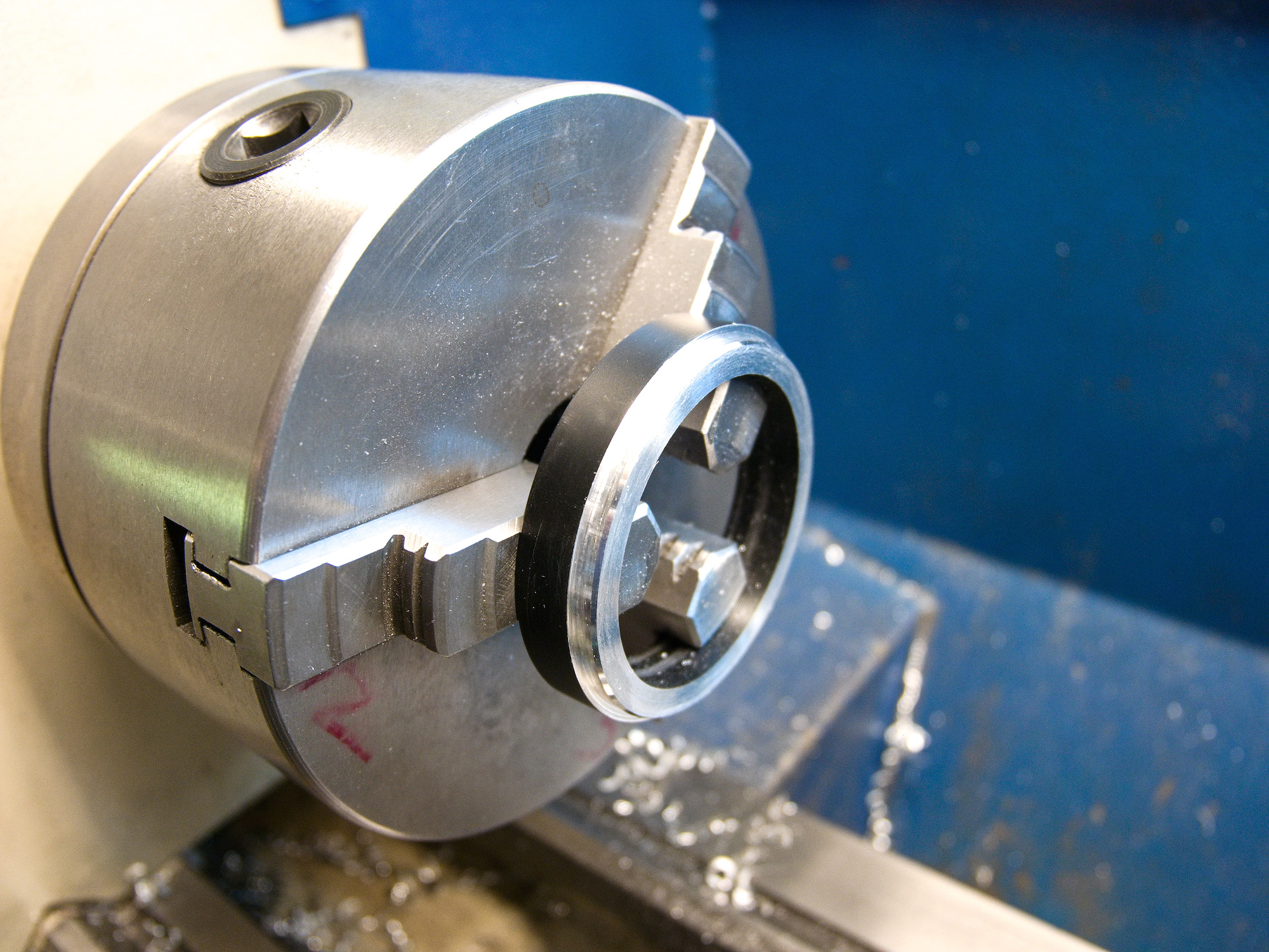
Machine the Z mount side to fit the reduced F mount half. The larger 4-jaw chuck is used to properly hold the mount as the 3-jaw chuck is not deep enough:

Both halfs are ready and will be pressed and glued together using Loctite 638:
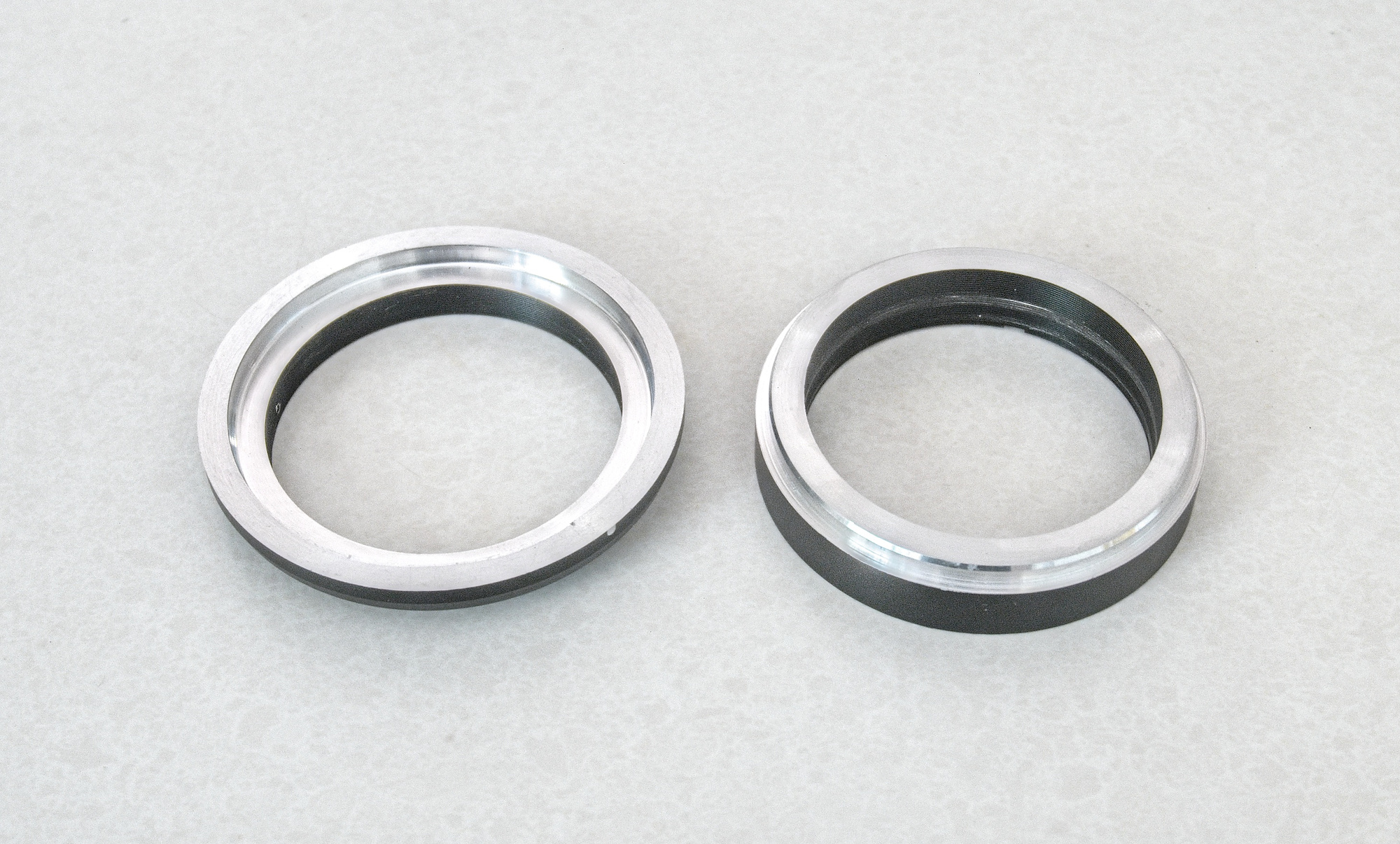

The adapter flange distance is reduced from 30.50mm (Nikon F flange distance is 46.5mm, Nikon Z flange distance is 16mm) to 16.40mm:
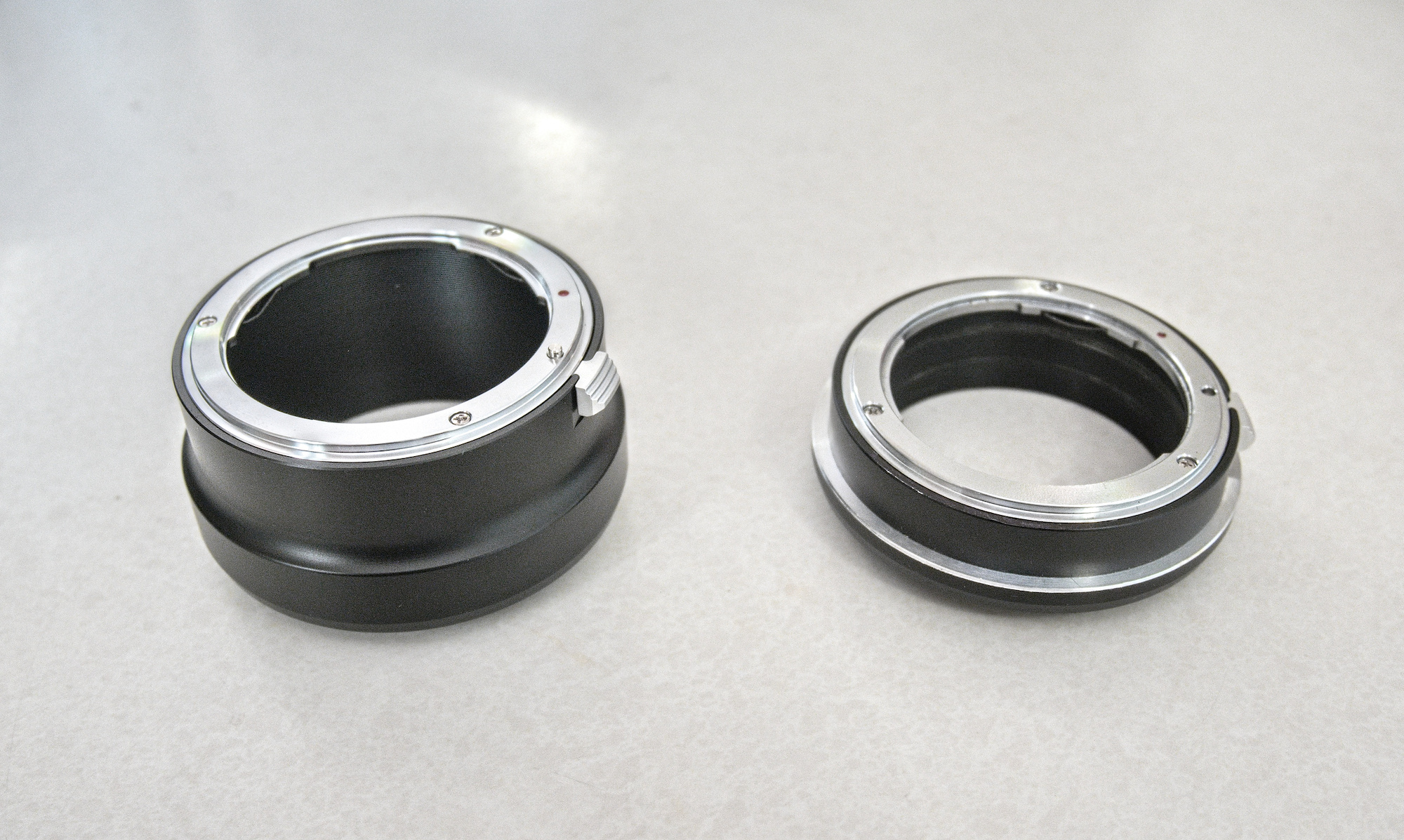
After a trial and error check with all my lenses, the 18-70mm Zoom Lens at 70mm focal length covered the full frame of the slide and fit perfectly. The reduced size of the F to Z mount adapter was just right for this focal length.
Aperture is set by a AR-3 cable release (not in the picture) or by holding the preview levers with a fixture.
The slide is lit by a LED Video Light with a CRI 97+:

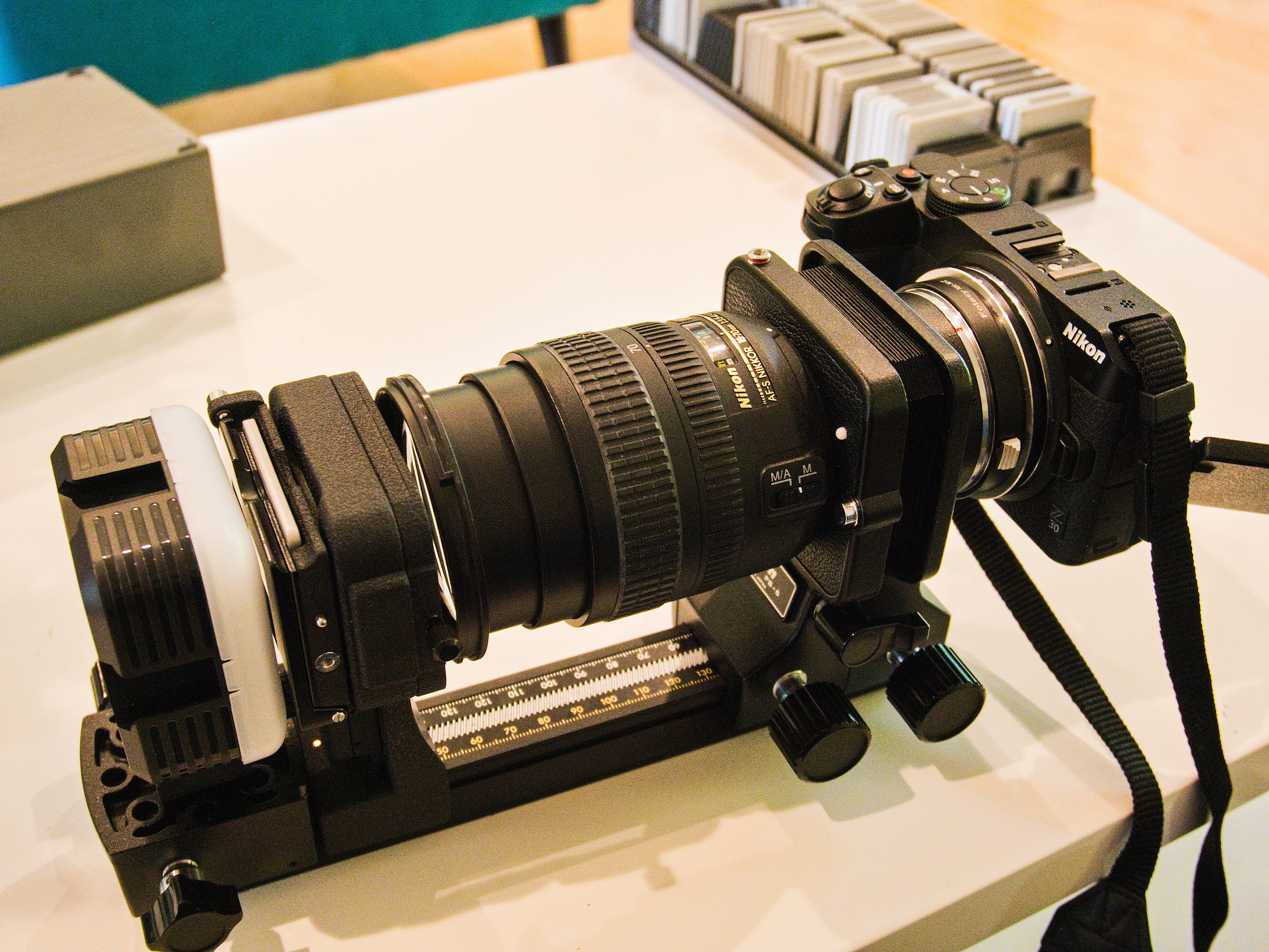
The full frame of the slide with a tiny border is visible in the preview:

The slide is captured as a NEF and ready for post processing: